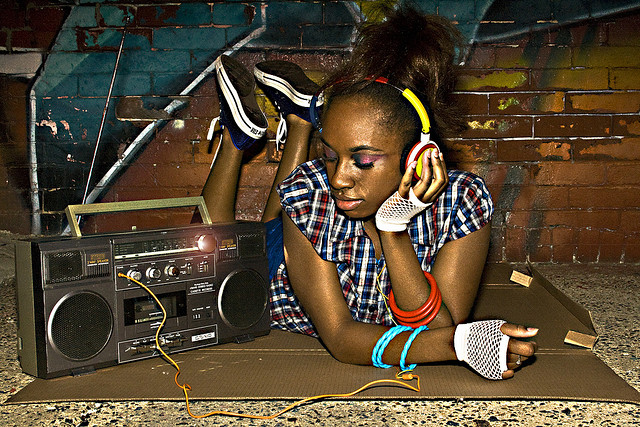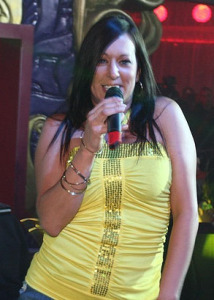Freestyle Music Refuses to Die

(Photo: Khalif Moore)
By Victor Soto
Bronx Journal Staff Writer
You could hear it everywhere – on the radio and throughout the club circuit; the music was inescapable. If you were in or around the Bronx in the 1980s and early 1990s, and you were Latino, then there is a definite chance that freestyle music touched your life.
At a time when the sound of Disco was becoming a thing of the past, this new genre of music, created in the Bronx, took the borough by storm, especially the Latino community, and rapidly grew into an unexpected force.
The freestyle genre paved the way for young Latino artists at a time when other forms of music dominated radio airwaves. It helped Latino entertainers gain recognition as mainstream artists. So if the music was so popular and ultimately reached vast audiences, then what happened? What became of the genre that was extremely popular and broke the boundaries that were once held by mainstream radio? To find the answers to those questions, we have to go back to 1992, the year many people believe marked the, “Death of Freestyle.”

(Photo:Swins A. Fontenelle)
During that year – after years of spotlighting such successful performers as George Lamond, TKA, Judy Torres, among others – the freestyle genre unexpectedly took a turn for the worse. “Mainstream radio decided not to play the music anymore because they moved to a new rating system: Neilsen Soundscan, where they would take the CD purchasing information from retail stores, and those sales would determine which songs radio stations should play” said legendary freestyle producer Carlos Berrios. With the help of Soundscan to determine what genres of music were more profitable to invest in, radio stations immediately began to abandon all dance-related music (including freestyle) from their playlists, because the music was not as popular as hip-hop or rock, at least according to music sales.
The absence of freestyle music from radio formats, especially in the New York City area, led many to believe that the music itself had faced the same fate as Disco. “Without the support of radio, freestyle was certainly doomed,” said singer/songwriter/producer Artie Rodriguez, who grew up in the Bronx and started out as a freestyle recording artist. However, the end of 1992 would not really mark the death of freestyle, as many people had expected. More precisely, it marked the death of the old school era of freestyle.
At the beginning of 1993, the freestyle genre began to reinvent itself, and what emerged was a new defining sound that would launch the start of a new school era. With the introduction of new artists, new producers, and new record labels, a new generation would emerge and be ready to recapture freestyle listening audiences. Yet without the support of mainstream radio, people would continue to believe that this genre of music was already way past its time. This sense of doom would continue for the next three years, until the reemergence of an old radio station that would resurrect the freestyle genre for a new generation of audiences.
On February 9, 1996, the New KTU (103.5-FM) appeared on the New York scene, creating a format featuring all forms of dance music, including disco, freestyle, house, and trance. Thanks to efforts of the New KTU, the freestyle genre was once again revived. Unfortunately, it was only beneficial for freestyle artists from the old school era, opening up new performing opportunities for them, but not the new school artists.
“I thought KTU would help promote the new school artists too, but it didn’t go that way,” said Hector Colon, who once dreamed of becoming a freestyle artist himself, but knew full well how freestyle’s new school artists were being overshadowed by their peers, and were still struggling to become accepted by listening audiences.

(Photo:G5Events)
In 1998, a young freestyle artist by the name of Rockell would release her debut album, “What Are You Looking At”, which spawned the hit songs, “Can’t We Try” and “In a Dream.” These songs were not only played and requested regularly on the new KTU, they were also heard across the country. Rockell’s success helped the freestyle genre gain exposure and gave music producers reasonable cause to risk time and money in it.
Furthermore, established freestyle artists like Lamond, TKA, and Cynthia would follow up on Rockell’s success through independent dance label Robbins Entertainment. However, their attempts at success were in vain, as none of the albums became highly successful, nor were any able to move up in the following year by releasing brand new albums of their own, through independent dance label, Robbins Entertainment. However, their attempts at success were in vain, as none of the albums became highly successful, nor were any able to move up in the dance charts.
The start of the new millennium would lead to a devastating blow for the genre, freestyle. Tazmania, Metropolitan, and other independent records labels that were solely devoted to promoting the freestyle genre began to close down. Major record labels decided to drop smaller labels from their distribution and manufacturing deals, forcing those same independent labels into bankruptcy, because they lacked the financial resources to continue to compete.
One of the main reasons for the failure of smaller labels in the music industry was the illegal downloading of songs over the Internet, resulting in rapidly dwindling music sales. The digital age quickly changed the face of the music industry, severely hurting even the major record labels that were unable to counteract this worldwide trend.
In 2001, as the Internet continued to grow, so did a number websites dedicated to the freestyle genre. One website in particular, www.clubfreestyle.com was created, well promoted, and praised by fans as the main source for everything freestyle genre-related. Not only does this website feature information and updates on upcoming performances, but also forums that include topics ranging from new music releases to event photos.
Fans are also given the chance to interact with recording artists and producers who were involved – then and now – in the genre. “I love the fact that I’m able to get more information about the music I love so much.” said Veronica Torres of the Bronx, who calls herself a freestyle lover.

(Photo:Swins A. Fontenelle)
In 2004, while the music still had a small presence on radio stations like the New KTU, the genre itself still had no defining audience. Yet the tireless efforts of one person, DJ Diamond Boy Luis, would bring back the sound intended for Latino audiences. By creating his own midday mix show, “The Freestyle Flashback,” and incorporating well established club deejays, DJ Diamond Boy Luis rekindled the demand for freestyle, by playing both classic songs and brand new releases on the station known as La Kalle. Unfortunately, due to low ratings and unusual circumstances, the show was dropped less than a year after its debut, leaving the genre abandoned again.
Yet, the love for freestyle music persists. “I can’t believe there are so many freestyle artists signed up here,” wrote freestyle fanatic Luis Rivera when he first logged on to Myspace back in early 2005. Myspace was not only a revolutionary tool for the music industry, but for the freestyle genre as well. Through the use of Myspace music profiles, which catered to the promotion of major, independent, and unsigned recording artists, freestyle artists from all around the world immediately began establishing themselves on this increasingly popular website. By creating profiles and providing their music to fans, Freestyle artists established a stronger presence across the internet, and fans were given direct contact with freestyle recording artists.
Today, the freestyle genre is still alive and well. In fact, it is enjoying a reemergence! More than ever, performance venues throughout the tri-state area are booking freestyle artists (predominantly from the old school era), while other freestyle artists (from the new school scene) are releasing their own music independently via such downloadable outlets as www.snocap.com and www.itunes.com.
On the internet, www. newyorkfreestyle.com has become the main source for freestyle information, providing frequent updates on the genre’s progress in the current music industry. And on New York radio, a new dance station, Pulse 87, is again promoting freestyle music. Only time will tell what awaits the freestyle genre in the future. It is clear that the music refuses to die.

Industrial freestyle